
|
| Accept Cookies | Customize | Refuse Cookies |
_Axl_ www.juzaphoto.com/p/_Axl_  |
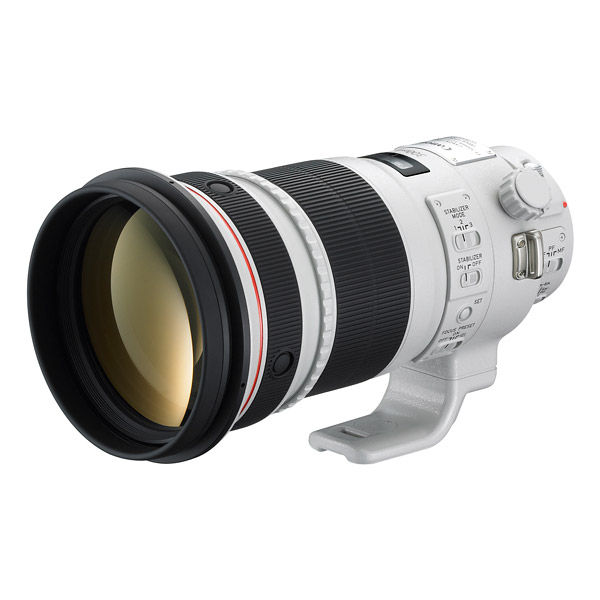 | Canon EF 300mm f/2.8 L IS II USM Pros: Stunning image quality, perfect micro-contrast, excellent sharpness even at TA, impressive bokeh, incredible take-off, lightning-fast MAF, impeccable construction, fully usable with extenders, compact size making it a great travel companion, excellent 4-stop stabilization, fully usable handheld, perfect lens for sports, travel, nature, photojournalism and fashion photographers, fully compatible with Canon's new R-Series. Cons: None, one of the best lenses Canon has ever produced. Opinion: One of the best Supertele ever produced by Canon. The Canon EF 300 f2.8 IS II is the perfect travel Supertele (also intercontinental) thanks to its small size and thanks to the fact that it can be multiplied with very little IQ loss both with the 1.4x TC (insignificant IQ loss) and with the 2x TC (more present but fully usable IQ loss with satisfaction). The construction is impeccable, the tropicalization excellent. The lens has a large f2.8 aperture and offers ultra-high optical performance, outstanding image quality, and a relatively lightweight and durable design. It is, given its relatively low cost, one of the first Supercanvases that you buy and that, once you realize the IQ, that you keep. All the images taken show an extraordinary optical quality, the sharpness already at TA is striking, the creamy and perfect blur amazes, the absolute absence of any optical defect is surprising. The lens has all the professional selectors on the body and a generous and well-made lens hood and is sold with the usual hard case. The image quality remains amazing both with the TC 1.4x and 2x (I use version III in both cases) and this allows you to have a 300 f2.8, a 400 f4 and a 600 f5.6 with "little expense", which is priceless first and foremost for travel photographers (I use it in my African Safaris with immense satisfaction). The high-quality front glass element is a feast for the eyes. For owners of the Canon system, it is a must have. Lens with embarrassing optical quality. sent on March 20, 2024 |
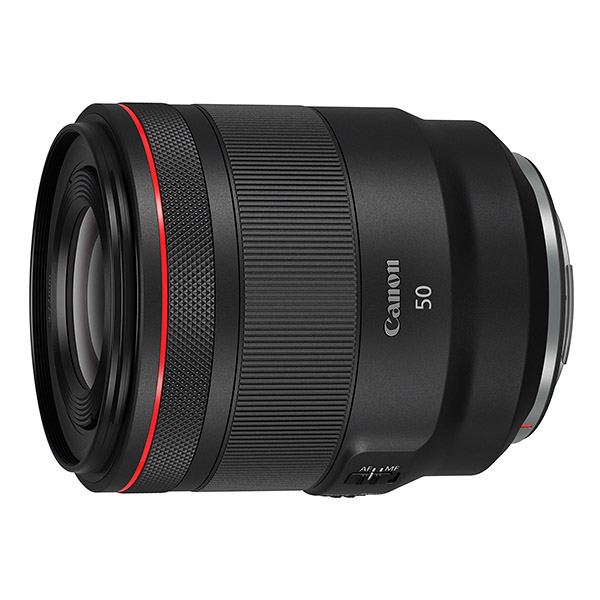 | Canon RF 50mm f/1.2 L USM Pros: enchanting bokeh, impressive MAF precision, excellent sharpness already at f1.2, total absence of flare, gradual and strong detachment of the planes without reaching the sticky figure effect, presence of the programmable control ring, solid and tropicalized construction, 77mm filters, non-existent distortion. Cons: Heavy (but quite in line with its f1.2 counterparts: the Sony weighs 172 grams less and the Nikon 140 more), bulkier than the Canon EF 50 f1.2 (but it is in line with its counterparts, practically identical to the Sony GM but definitely more compact than the Nikon Z), high price. Opinion: In a self-respecting kit, a 50 f1.2 cannot be missing. The Canon RF 50 f1.2 collects a heavy legacy, that of the Canon EF 50 f1.2 lens that boasts a huge audience of admirers (including me) and detractors because it was a lens full of optical defects that, in the eyes of admirers, were poetry while in the eyes of detractors they were... optical defects. This Canon RF 50 f1.2 totally differs from its predecessor as it is a super correct and razor-sharp lens already at TA. In Canon's currently produced lenses, the f1.2 aperture is the brightest and is currently reserved for only two lenses, the Canon RF 50 f1.2 and the Canon RF 85 f1.2. This aperture gives photographers and filmmakers the ability to shoot low-light subjects at relatively low ISO with an extremely shallow depth of field, a great way to isolate a subject from its background. Having such large apertures allows you to use fast shutter speeds even in low light conditions, freezing, as a result, both the movement of the subject and the camera shake that could cause microblur (when shooting with a mechanical shutter). The MAF Ring-USM system, also used in Canon's Supertele cameras, smoothly moves the large optical elements of the RF 50 f1.2 allowing for fast and accurate focusing that allows you to easily track subjects as they move through the frame. It was the first 50 f1.2 of the new generation (the Canon came out in 2018, the Nikon Z in 2020 and the Sony GM in 2021) and, compared to the Canon EF 50 f1.2, it stands out for its exemplary sharpness and the absence of any optical defect that, on the other hand, characterized its predecessor. In particular, the total absence of flare even with the sun totally inside the lens is striking. The sharpness at f1.2 is already excellent as well as the contrast across the entire frame, including the extreme corners. Closing the aperture to f2 produces a slight increase in sharpness, which at f2.8 already reaches its maximum. The vignetting is present at f1.2 but it is pleasant and gradually fades when the aperture is closed to disappear definitively at f4. On the side of the lens barrel, there are two switches. One gives direct control over AF/MF (always appreciated) and the other is a focus limiter. The latter is a bit unusual for a 50mm lens, but the RF 50 L is able to focus at a slightly shorter distance than many 50mm (40cm) lenses and has a very useful maximum magnification of 0.19x. The use of MAF's limiter offers a significant difference in the rate of fire acquisition. Distortion is, quite simply, non-existent. If you love the ultra-fast 50mm focal length it is a must have in the Canon system, for me it is an antithetical lens and, therefore, complementary to the Canon EF 50 f1.2 and, therefore, I keep them both supplied. sent on March 20, 2024 |
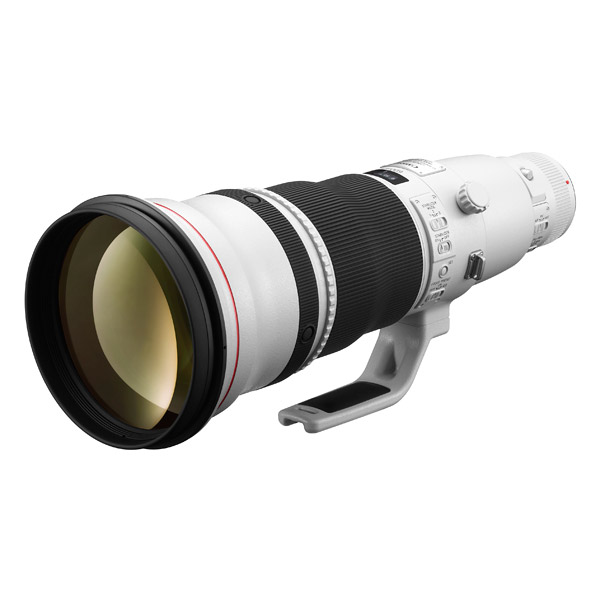 | Canon EF 600mm f/4 L IS II USM Pros: Perfect image quality, incredible sharpness, ideal lens to be multiplied, bright aperture, construction at the highest level, micro-contrast, blur and image stabilization. Cons: Fragile lens hood fixing system, very expensive lens hood replacement (€ 919,00), weight compared to current models. Opinion: Ultimate goal. Construction at the highest level, the lens body is entirely made of magnesium and/or titanium, the switches on the lens body are in the right place and show all the controls you need, and the MAF ring is perfect and fluid. The lens is, of course, tropicalized like a Canon L-Series and, therefore, this allows its use even in adverse conditions. Optical design consisting of fluorite and UD elements that counteract aberrations and distortions. It's an exceptional lens and has the ideal range for wildlife photography (from large African mammals to passerines) and sports photography. 600mm with a constant f4 aperture is the best you could wish for to bring your subject closer without disturbing them. It's my favorite lens for Safaris where I mount it on the Canon R5 whose 45 Megapixel sensor is perfect to bring out all the details that this wonderful lens can give. The constant f4 aperture and the incredible IQ of this lens make it perfectly compatible with TCs, in particular, with the 1.4x III the loss of detail is almost zero, with the 2x III the drop is greater but the image remains fully usable. It is a definitive lens and this can be seen as soon as you open the images on the monitor that will be incredibly sharp and micro contrasted, full of detail and with a superb color restitution. But it is the detachment of the planes that leaves you speechless, already @600mm at f4 or, even better, @840 (with TC 1.4x inserted) at f5.6, the focus will emerge in a surreal way from a creamy, unique and wonderful blur that has nothing to do with those applied in post production. sent on February 22, 2024 |
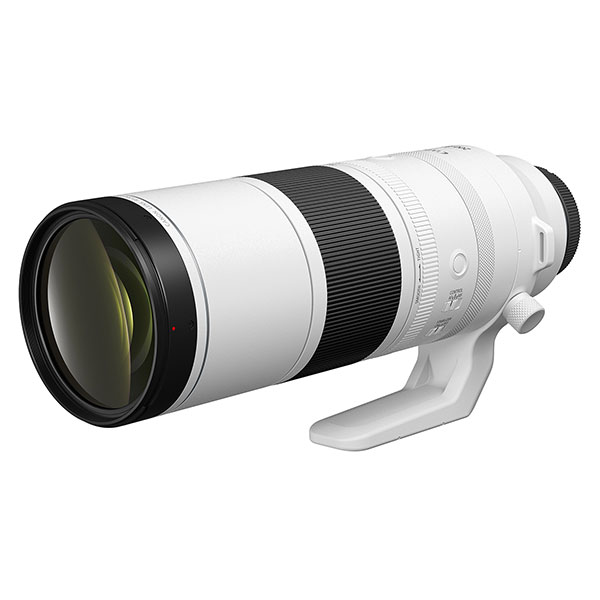 | Canon RF 200-800mm f/6.3-9 IS USM Pros: Focal range that, already excellent on FF, becomes a real game changer on APSC (320-1,280); IQ in line with the price of the lens; can be used at TA at any focal length; MAF and tracking speed thanks to the Nano USM linear motor; tropicalization; good balance; low weight; presence of customizable buttons; Smooth/Tight clutch to modulate the fluidity of the Zoom; brightness @800mm equal to that of its competitors with the TC 1.4x; (relatively) low price; Customisable bezel. Cons: External zoomed; there are only two selectors (AF/MF and Stabilizer ON/OF) those for stabilization in modes 1-2-3 and one for the MAF limiter are "missing". Opinion: I was impressed by this 200-800, it seemed to me to be a lens with a good Q/P ratio. I tried a pre-production copy on the 24 Megapixels of the R3 (FF) and enjoyed the exceptional 4x focal range up to @800mm. This focal range on an APSC becomes a 320-1.280, an impressive range and very useful in birdlife. On the AF side I found myself very well, the Nano USM motor combined with the R3 does its duty and returns a lens that moves with great speed and excellent tracking ability. In terms of IQ it seems to me that this specimen I tested, I repeat from pre-production, is an excellent copy and returns the detail that you would expect from a € 2,500 Zoom, also excellent performance @f11 where there is no trace of diffraction. In my opinion, the Canon RF 200-800 is a very useful lens for those who want to approach birdlife where, as is well known, mm are never enough with the obvious awareness that, given its starting (f6.3) and arrival (f9) apertures, when the light goes down, the ISO will rise with all the consequences of the case. Being aware of this, organizing to shoot at the best times and wanting to opt for a single lens, the focal range of the 200-800 is, in my opinion, ideal. Not mounting multipliers will be very convenient in many contexts. In terms of brightness, @800mm is an f9, an aperture equal to that of the various 180/200-600 with the 1.4x TC inserted. sent on December 11, 2023 |
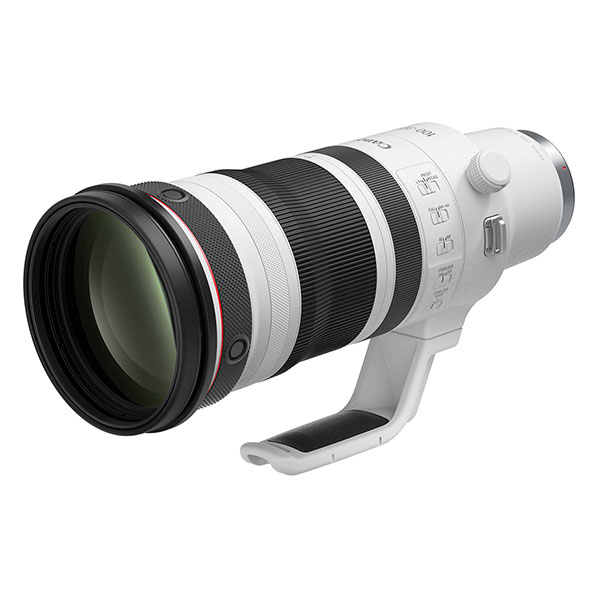 | Canon RF 100-300mm f/2.8 L IS USM Pros: Very correct lens and without AC, sharpness, micro constrasto, image quality also multiplied, top construction, fluid ring and with a manageable stroke with a single hand movement, immediate AF, very compact hood, excellent balance, 5.5 stop stabilizer very silent. Cons: No built-in CT. Opinion: The lens is compact, it is slightly longer than the Canon EF 300 f2.8 IS II (323 mm VS 249mm) and is slightly heavier (2650 g VS 2400 g) but in the hand it falls better, it is better balanced thanks to the smaller hood (as shown in the photo). The combination with the R3 is perfect, those who have tried a Canon Series 1 (or R3) (or Nikon Flagships) understand well what are the advantages of a generous body with integrated BG, the balance is perfect and the grip is safe both vertically and horizontally. The zoom is internal. The construction is, like all Supertele L, very solid and at the highest levels, the lens is obviously tropicalized and the materials are at the top of quality. While the Canon EF 300 f2.8 IS mounts an ultrasonic AF motor (Ring-USM), this new Supertele RF mounts two Nano USM motors thanks to which the MAF with the R3 is immediate, stable and very quiet making this lens perfect, in combo with an electronic shutter, for shots in conditions that require absolute silence (I think of theaters or photojournalism). The speed of MAF is appreciated in passing from the minimum distance of MAF (1.8 meters) to infinity; The work done on this front is surprising. The bokeh is beautiful, I took @f2.8 a portrait with plants behind and the resulting background is wonderful; compared to my Canon EF 300 f2.8 IS II the blur is even more pleasant because the subject in focus is even sharper while retaining its contours well but, at the same time, the figurine effect is avoided. The 5.5 stop image stabilization works in an absolutely silent and imperceptible way, the zoom ring is very fluid and precise and it is easy to switch in a single movement from 100mm to 300mm. The AC are non-existent, the lens is very correct thanks to the use, among other things, of a fluorite lens and four UDs. I got to use it on the R3 and R5 with the Canon RF TC 1.4x and the IQ is not affected at all as well as the speed of MAF. The Supertele is sold with its own double zip bag. As you know the price of the Canon RF 100-300 f2.8 L IS USM is around € 11,990 and € 12,500, objectively many in absolute value but a lens like this, combined with the two TC 1.4x and 2.x, allows you to have: - a 100-300 f2.8; - a 140-420 f4; - a 200-600 f5.6; while, if mounted on an R7, it can allow you to arrive (in combo with a TC 2x) to an eq. of 960mm. The lens has already been pre-ordained by numerous professionals working in the fields of fashion, journalism, sports and indoor events. Personally I find it an ideal focal excursion also for African Safari (except for Tanzania where the distances from the animals suggest longer lenses) and for other photographs of birdlife as evidenced by the galleries of the Canon EF 300 f2.8 IS II on Juza. In my opinion, finally, a 100-300 f2.8 is the ideal travel Supertele because it is relatively compact and, combined with two TC 1.4x and 2x, allows you to comfortably get (on FF) @600mm to f5.6 and (on APSC) @960mm. If you practice the genres I have described above this is, for me, a definitive lens. The only flaw of this 100-300, for me, is not to have a TC 1.4x / 2x integrated, for the rest nothing to say. sent on July 18, 2023 |
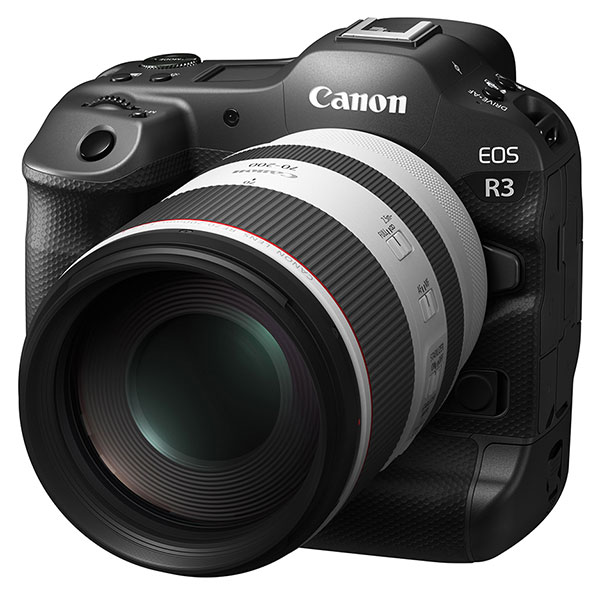 | Canon EOS R3 Pros: The most consistent of the AF modules, the ability to focus in the dark, the shutter speed of 1/64,000, the exclusive Eye Focus Control, the best resistance to high ISO, 24 excellent Megapixels, the automatic recognition of people, animals and vehicles, the perfect ergonomics especially with "important" lenses such as Supertele and fixed RF, extraordinary burst (up to 30 FPS with ES), Canon's first Stacked sensor, the excellent tropicalization, the presence of the smart touch control at the AF ON button, the excellent viewfinder even in very low light, the absence of rolling shutter, a powerful battery that "moves" in an instant even the heaviest lenses. Cons: Absence of lock button for the mode dial, this can allow you to turn it inadvertently (I set the ISO to this), slightly small upper display. Opinion: Canon's dedicated camera for photographers engaged in sports, photojournalism, reportage and "fast" birdlife, the Canon EOS R3 is the first Canon FF RF to be equipped with the brand new Stacked sensor designed and manufactured by Canon. The latter, together with the excellent DIGIC X processor, represents the fulcrum of the R3 whose task is to ferry canon 1 Series owners to the new Mount RF. Thanks to the very fast readout of the sensor (1/180) the R3 allows you to use the electronic shutter in virtually any situation without the risk of incurring the Rolling Shutter. I immediately appreciated the operating speed combined with the possibility of shooting up to 1/64,000 (with bursts up to 30 FPS with electronic shutter) and with a consistency of photos in focus practically absolute in any context thanks to an incredible and fully customizable AF module that, repeated to the competition, can also take advantage of the innovative (for an R) Eye Focus Control, that is, the possibility of looking with the eye at what you want to focus on, thus giving the control to the machine combined with the possibility of automatically selecting people, animals and vehicles. The sensor is as fast as it is in quality (this is perceived as soon as you open the first RAW) so much so that it has earned the highest score (for a Canon sensor) on DXO which, at the same time, has praised it as "the best low light performance of any full-frame camera in our database". Its form factor winks at the historical customers of the Canon 1 Series and guarantees almost perfect ergonomics, especially with "important" lenses such as Supertele and RF fixtures. This machine removes any alibi to the photographer: if correctly set the AF module it is not possible to mistake the hooking of a subject as it is not possible to have a frame of an out-of-focus burst so, if this were to occur, the fault would fall, solely, on the incompetence of the user. I have yet to test it in the travel reportage but, from my first impressions, this is a total machine capable of fulfilling its duty both in a studio in Rome and in a context of rain, dust and humidity typical of some difficult destinations. sent on December 27, 2021 |
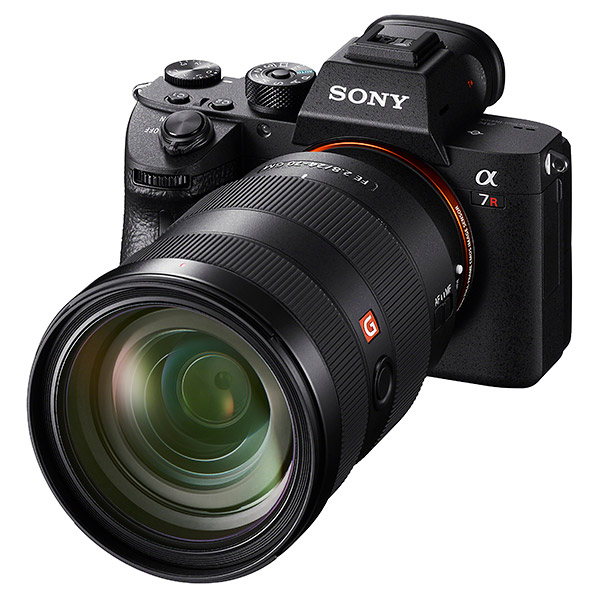 | Sony A7r III Pros: Files with excellent quality, dynamic range at the top, excellent ISO yield given the sensor density, very advanced customization possibilities (keys and rings), excellent ability to focus on backlight, good IBIS (5.5 stop), possibility to set ISOs at 50, really competitive price for the quality it offers. Machine dedicated, in particular, to landscapes, portraits posed and in the studio, travel reportage, ceremonies, laid birdlife, and architecture. One body for very heterogeneous genres. Cons: The consistency of the AF, however good, is not in line with the latest competition (Canon R5 and R6), the AF area does not cover 100% of the frame, the point of non-colorable gray MAF is absurd, the sensor not protected by a curtain is, for my use, a little limiting, the Joystick is short, the lever is not perfect , the pusante AF-ON I preferred it slightly deeper, a better touch would have been comfortable, the rear LCD of the A7rII returns colors not pleasant and very far from those of the RAW file downloaded to the PC, the EVF is good but not great, very noisy shooting, writing time on the SD card (also UHS-II) long. Like all big MPXs, it needs valuable optics. Not particularly suitable for "dynamic" birdlife and sport. Opinion: After these first two months of use I can draw up an initial assessment of this splendid machine. The first impression, taken in the hands of the A7rIII, is solid, the construction is excellent, returns safety the keys are easily reachable, I do not miss the top display (I do not even own it on the R6) I miss the Fuji rings (but I do not even have them on the R6). The customization of the machine means that once you set the rich menu and dedicated the keys and rings to the personalized controls you will hardly need to return to it. The first caveat: the rear LCD is bad and does not do justice to the viewing of the images taken that, at first glance, will show a certain "flatness" and unreal colors but, once you return home and download the RAW, you will see on the PC a really different result and, finally, you will enjoy the beautiful details that this machine knows how to capture. What about the famous A7rIII sensor, is it as good as they say? I have to say yes, the sensor is splendid and the file of incredible malleability, in post production allows you, really, to do a little bit of everything that comes to mind thanks to the wealth of information it brings in dowry. This sensor is, if not the best, among the best sony has ever churned out, the A7rIV has more detail but I chose the A7rIII because I find its 42 MPX ideal for my photography and because I find its sensor more "balanced" than that of its older sister. The sharpness of the images and the low noise (for a 42 MPX sensor) make this machine ideal in many contexts, from landscape to posed portraits, from architecture to travel reportage while a good but not excellent AF module, should suggest to those who practice sports and / or birdlife not laying another body in Sony. I refined this machine together with a small "important" FE kit (24 GM, Voigtlander 40 1.2 and 135 GM) to my Canon kit focused on two 20 MPX machines (1ds3 and R6) and I must say that I am extremely satisfied, the A7rIII is, as rightly recognized by most, an excellent machine and again (in the genres I have detailed in the current "pros") and its sensor is still, decidedly, a reference. sent on March 16, 2021 |
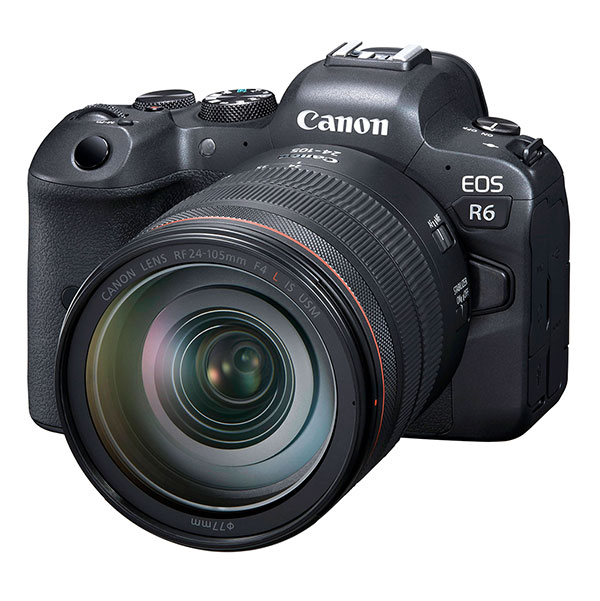 | Canon EOS R6 Pros: Simplicity of disarming use; possibility of customization; an amazing AF module for consistency, responsiveness and precision; an IBIS of absolute value; excellent HIGH ISO quality; the ability to use the endless EF lens park; sensor and processor directly derived from that of the Admiral reflex (less than half the price); an excellent Dynamic Range; an ultrafast burst (12 FPS or 20 FPS depending on whether you choose the mechanical or electronic shutter); perfect ergonomics; an electronic viewfinder that surprised me pleasantly, although set on "battery saving" and not on "fluid" the pleasantness of use is absolute and the difference with the OVF practically nothing; the impression on the build quality is great; The articulated LCD rear monitor is of incredible comfort; the double slot is an indispensable plus; positively affected by the battery life (a portrait session with review of the same lasts about 1,200 shots, many more than those declared by Canon). Cons: Rolling shutter presence (although contained to be a non-stacked sensor) when using the electronic octogenator; Although the electronic viewfinder has countless information a superior LCD panel would have been welcome for an immediate consultation of the basic parameters of the machine. Personally I would have opted in the design phase O in Fuji style dials (wonderful) Or for a solution similar to the one implemented in the R5. Opinion: sent on October 13, 2020 |
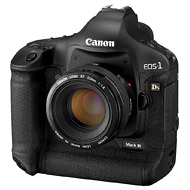 | Canon 1Ds Mark III Pros: Canon's best portrait file, an AF module that doesn't miss a beat and that, even with the sides, seamlessly hooks to TA in total backlight with the 85 1.2, total reliability, perfect construction, top ergonomics, double memory slot, battery life almost infinite. Cons: It "stops" at 1,600 ISO (3,200 in H mode), the 230,000 pixels of the 3-inch display look infinitely few compared to today's but are more than enough to realize the image taken. Opinion: My first machine body since 2015 (the current second is the 5d4). A wonderful machine, a typical body of the Canon Series 1, solid, reliable, tropicalized as only a Canon Series 1 can do, an AF system still excellent and that, even with the sides, quietly hooks to TA in total backlight with the 85 1.2. But it is the file that is the real plus of this machine, a file with "few" (21.1) but wonderful mpx, in portraiture I consider it, even today, unsurpassed, the best file of Canon. The feeling, the pleasure of having in your hands a Canon Series 1 with its unparalleled ergonomics, with the huge feeling of safety and reliability that it returns and this in both beauty shooting and travel reportage contexts is something incredible, something that needs to be tried. The two joysticks (for vertical and horizontal use) are perfect and allow a simple, fast and comfortable MAF point selection. The menu is typical of Canon simple and very easy access. The custom functions are organized into four categories and there are 57 functions, which allow you to really customize every aspect of the machine. The 1ds3 makes the best with fixed optics L Canon that keep that analog timbre that will give the rows of 1ds3 that yield and that paste that made it famous. The only one, true, is the is the is the isO limit: 1,600 (or 3,200 in H) limit it, it's a beautiful day. He accompanies me in beauty sessions and in my travel reports around the world and has never betrayed me, neither on the streets of Rome, nor under the water of Laos, nor in the cold of the Salar de Uyuni. Having the 1ds3 led me to choose to maintain, to this day, a reflex system as a primary system. When it comes out I will take the Canon EOS R5 (or the R6) but I will certainly keep the 1ds3 along with three of Canon's great prime lenses (50L, 85L and 135L). sent on April 16, 2020 |
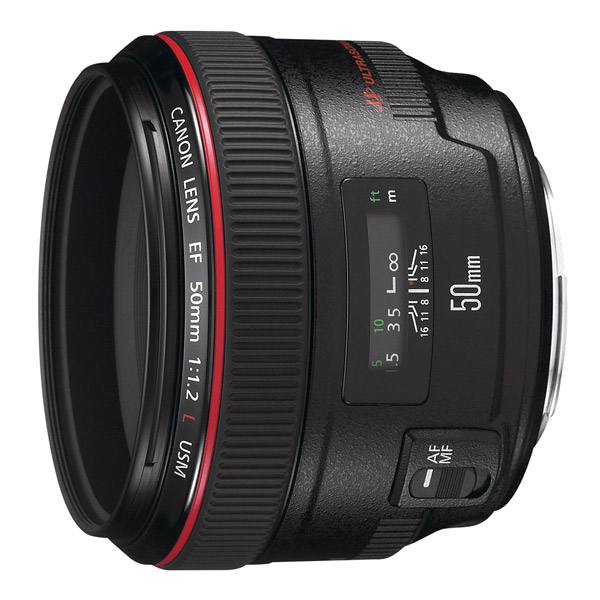 | Canon EF 50mm f/1.2 L USM Pros: Color yield, blurred progression, small size, tropicalization, construction. Impressive flare resistance. Autofocus perfect and very fast. Cons: Ta sharpness not in line with today's "fashion" but far more than enough for the portrait set. The same goes for the pronounced AC in TA. It's addictive and makes you want to use it all the time. Opinion: I can say with certainty that, alone, the 50L is worth the choice of the Canon brand. Let's start with the construction, perfect like all L Canon series. The standard lampshade is wide enough and extremely solid. The weight is really low compared to the new "heavy calibres" of the 50 (and I think of the 50L RF and 50 Art on all). The optical scheme consists of 8 lenses divided into 6 groups, the diaphragm counts 8 slats, the maximum opening is f/1.2 and the minimum opening of f/16, has a slight, really slight barrel distortion, easily corrected in post production. The diameter is 72mm and you can mount screw filters (which I have never done). The absence of a stabilizer is not felt given the enormity of the light entering the 1.2, this lens makes possible candlelight shots to ISO "humans". The vignette at TA is incredibly present and you have my eyes is precious and beautiful but disappears totally .2.8. There is also a strong presence of AC, especially to the most open diaphragms. I love the lenses I own and I bought them after a thousand reflections, precisely for this reason, I also consider the defects and, on fixed L "historic" (50, 85 and 135) I never correct in post production the AC nor, much less, flaggo in LR the box "activate profile corrections" because I certain lenses I have not bought them only for their merits but, also, for their defects and I keep them tight. In other words, the images that return the 50L have such a special yield, starting with the colors, which will be, once a monitor, truly incredible. The progression of blurring is unique, difficult to imagine a 50 that detaches more and in such a particular way not only at full opening but also at more closed diaphragms. What this lens gets is 2.8 you have to see in person, a quality of detachment and the progression of the fire plans really remarkable. Paired with the 1ds3 provides the best that EF Canon production can give to those who, like me, do not like hypernitidety and hypercorrection. Attracted by the future Canon R5 I will migrate sooner or later to ML but never, ever will I sell 50L, 85L and 135L, unique, incredible lenses that I will always carry with me. sent on March 22, 2020 |
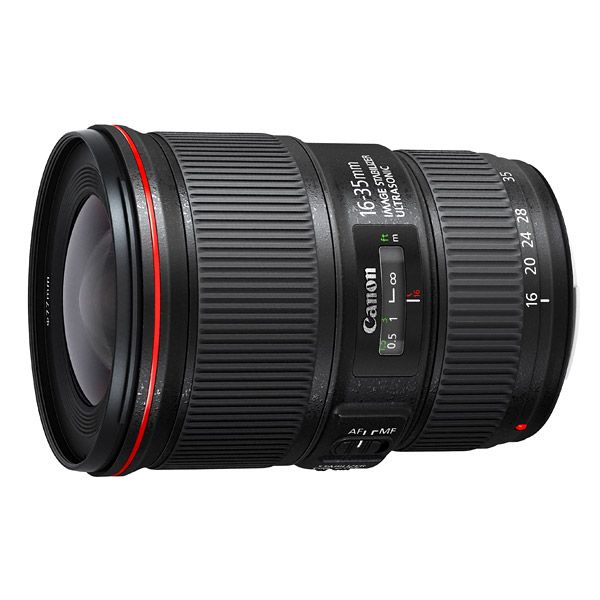 | Canon EF 16-35mm f/4L IS USM Pros: Sharpness, color rendering, stabilizer, weather sealing, screw filters 77, price Cons: Nobody Opinion: higher quality optics which for f4 returns an impressive detail. The image is excellent across the frame from the center to the edges, and this, together with the presence of the stabilizer, making it the ideal lens not only for landscapes but also for reportage and street. The color rendering of images is really superb and very good resistance to flare. The distortion to 16 is easily uncorrectable PP. The quality / price is finally good. In my opinion it is the best wide angle for Canon currently on the market. sent on June 01, 2016 |
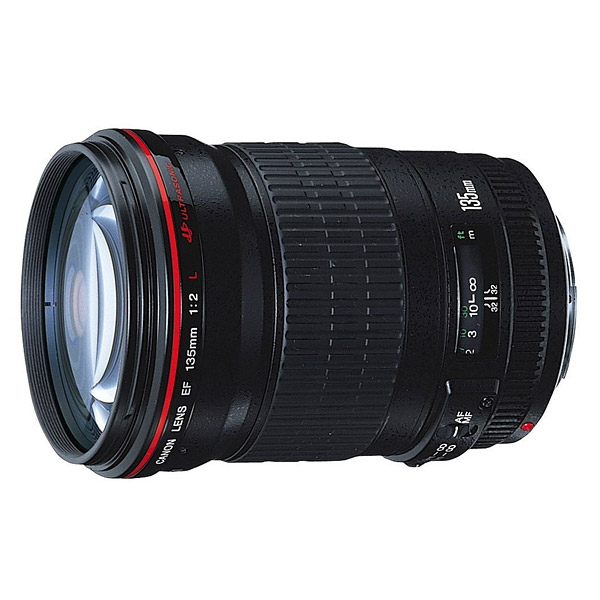 | Canon EF 135mm f/2.0 L USM Pros: Sharpness, colors, weight, price, construction, speed of MAF Cons: Nobody Opinion: An extraordinary slow the 135L. The first impression you get is the extreme lightness is therefore an ideal lens not only laid portraits but also for travel portraits. It 'amazing how the focus speed, set to 3m is truly meteoric. The colors, the accuracy of the MAF, the detail that this lens returns are truly amazing. The cost, high but not extremely high as in the case dell'85L, is therefore fully justified. You will discover the pleasure to admire the huge front lens, ultimately it is a truly definitive lens and can not miss in the outfit of a portrait or a traveler who, like me, are fascinated by the different ethnic groups that populate the world. Masterpiece. sent on June 01, 2016 |
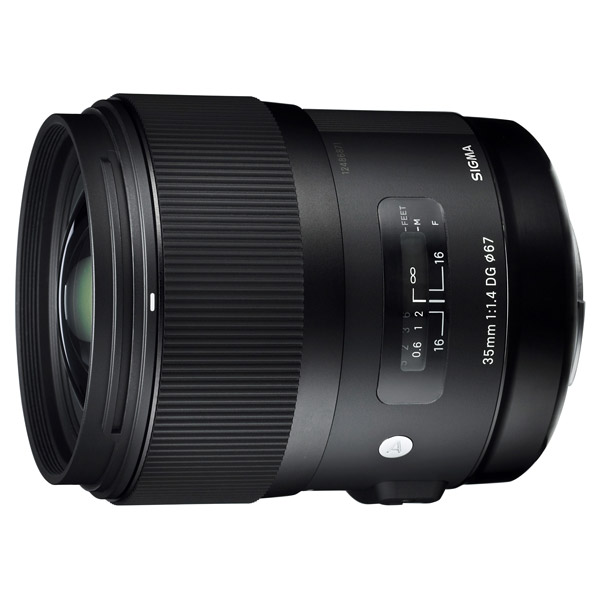 | Sigma 35mm f/1.4 DG HSM Art Pros: Sharpness, color rendering, blurred, reliability, construction and price Cons: really no Opinion: A final goal. He screen headed around the world without ever wrong clicks (mounted on 30d, 5d, 6d and 1ds3). I am using it for reportage, street and satisfaction for the close-ups. He has never let me down. MAF very accurate with all lighting conditions, materials that convey reliability are the first qualities of this beautiful lens. The blur is perfect to my eyes, detachment of 1.4 original plans gives great satisfaction. I tried, before purchasing its Canon counterpart (35L I) and I had no doubts. 35 1.4 ideal for me is this. sent on June 01, 2016 |
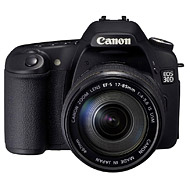 | Canon 30D Pros: Excellent yield of the pictures, in either JPEG or RAW really need very little pp.rnResa colors really ideale.rnFiltro absolutely not invasivo.rnBatteria almost infinita.rnIndistruttibile.rnAffidabile. Cons: Yield at high iso ENOUGH. The few MPs (8.2) are not a problem (unless you're fanatics crop!) Opinion: With good optics (24-105, 70-200 f4 is 35 and Sigma Art) returns the image as the gallery below riportata.rnhttp: //www.juzaphoto.com/m_me.php? Pg = 93526 & l = itrnrnI colors, the yield to iso "human", the reliability in any condition (from the heat of Rajasthan in May, the sand of the desert in Africa, the humidity of Victoria Falls) make it, today, a second body at a phenomenal price that is, it used, from 100 to 200 euro. Frankly I do not know that you could buy a new body that figure ... rnrnPer personal experience: a serving 30d 150 € today? RnRajastan, second day. Travel dreamed for years. Optical kit built on this trip anni.rnClic. Et voila '! Skip the side of the 5D !! Terror! The FF was out! I take then the 30d and ... Magic, three weeks of shots and never a problem, never! Good optics on this body gave me back pictures that adoro.rnrnPer those fans of newcomers, for all supporters of the most esasperate.rncon this taking pictures. Punto.rnrnALTAMENTE RUIN A CHI: rn "BUT I WANT TO SPEND MUCH OF PI?" RNE rnrnAGGIORNAMENTO 29 April 2015 at the end, after nine years of honorable service and over 140,000 shots .... the shutter has decided that it was right to retire ... Flow immediately repair ... alas spare parts are gone. Sin, a second body heroic and resistant (Namibia, South Africa, Botswana, California, Zambia, Zimbabwe, Rajasthan, New York, Laos, Thailand, Morocco, Egypt, Jordan, Mexico, Belize, Guatemala, Honduras ... to name a few of the places where I was faithful companion) rn sent on November 15, 2014 |
 JuzaPhoto contains affiliate links from Amazon and Ebay and JuzaPhoto earn a commission in case of purchase through affiliate links.
JuzaPhoto contains affiliate links from Amazon and Ebay and JuzaPhoto earn a commission in case of purchase through affiliate links.May Beauty Be Everywhere Around Me